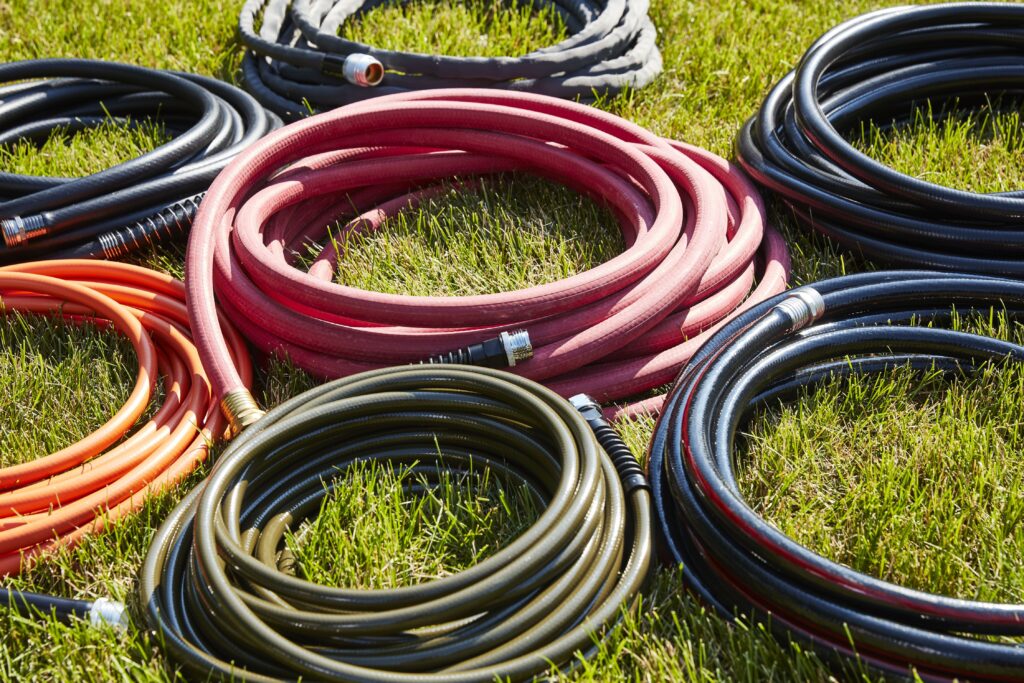Gardens need regular cleaning to maintain their neat look and water for the plants and grass to thrive. Proper irrigation is essential as water supports growth, nutrient absorption, and greenery. For this purpose, a garden hose is used.
A garden hose is one of the most fundamental and versatile tools used in gardening, landscaping, and general home maintenance. It is a soft, bendable tube that carries water from a tap to different places. It can be used to water plants, clean surfaces, and fun activities like filling pools or playing with water in the summer.
Growcycle is an online market for the best garden hoses. It offers heavy-duty, durable, and flexible hoses to make watering the garden as easy as possible.
History of the Garden Hose
The concept of water transportation through tubes dates back to ancient civilizations. Early forms of hoses were made of leather or stitched fabrics coated with tar to prevent leaks. The modern rubber hose was developed in the nineteenth century with the invention of vulcanized rubber.
John Boyd Dunlop, the pioneer of pneumatic tires, contributed to developing flexible rubber hoses, which are now more durable and resistant to kinks. Over time, improvements in materials such as reinforced synthetic fibers and advanced plastics have created lightweight and more durable hoses.
Types of Garden Hoses
Garden hoses come in different varieties based on their intended use. Here are the most common types:
1. Light-Duty Hoses
These hoses are typically made of vinyl and are designed for small-scale gardening or light cleaning tasks. They are affordable but may not be as durable as other types.
2. Heavy-Duty Hoses
It is made from rubber or reinforced materials and can withstand higher water pressure and extreme weather conditions. They are ideal for extensive lawn care and commercial landscaping.
3. Expandable Hoses
Expandable hoses have a flexible inner core covered with a fabric exterior. They expand when filled with water and shrink when emptied, making them easy to store. However, they may not be as durable as traditional rubber hoses.
4. Soaker Hoses
These hoses are designed for slow, steady watering. They have tiny holes or pores along their length, allowing water to seep out gradually. They are perfect for garden beds and conserving water.
5. Flat Hoses
Flat hoses resemble fire hoses and collapse when unused, making them compact and easy to store. They are ideal for areas with limited storage space.
6. Coiled Hoses
These hoses retract spirally, making them convenient for small gardens, patios, or balconies. They are lightweight but typically have a shorter reach than traditional hoses.
Materials Used in Garden Hoses
The durability and functionality of a garden hose depend mainly on the materials used in its construction. Common materials include:
- Rubber: Rubber hoses are the most durable and resistant to extreme temperatures, UV exposure, and abrasion. They are heavier and more expensive but last longer than vinyl hoses.
- Vinyl: Vinyl hoses are lightweight and affordable but less durable. They may crack or degrade faster when exposed to harsh weather conditions.
- Reinforced Hoses: Many hoses feature mesh or synthetic fiber reinforcement layers, which increase their strength and prevent kinks and punctures.
- Polyurethane: Polyurethane hoses are eco-friendly, lightweight, and free of harmful chemicals like lead, making them safe for drinking water applications.
Uses of a Garden Hose
A garden hose serves multiple purposes, including watering plants. Some of its common uses include the following:
- A garden hose is primarily used to water lawns, flowers, and vegetable gardens. With adjustable nozzles or sprinklers, homeowners can control the flow and coverage.
- A garden hose with a high-pressure nozzle can be used to wash cars, sidewalks, driveways, and even outdoor furniture.
- A garden hose is the most convenient way to transport water in an inflatable pool, pond, or birdbath.
- A garden hose can sometimes be used to defend against small fires, especially in dry areas prone to wildfires.
- Children and pets often enjoy playing with garden hoses in the summer, using them for water fights, slip-and-slide games, or cooling off in the heat.
Maintenance and Storage
Proper maintenance extends the lifespan of a garden hose and ensures it remains in good working condition. Here are some essential care tips:
1. Drain After Use
Always drain water from the hose after use to prevent mold, freezing in cold weather, and premature wear.
2. Store Properly
Coil the hose properly and store it in a shaded place to protect it from direct sunlight, which can reduce the material quality over time. Hose reels and wall-mounted holders help keep hoses organized.
3. Check for Leaks and Damage
Regularly inspect the hose for leaks, cracks, or weak spots. Small leaks can often be repaired with hose repair kits.
4. Avoid Kinks and Twisting
Kinks can weaken the hose and lead to leaks. Using a kink-resistant hose or a hose guide can help prevent this problem.
FAQs
Why does the garden hose leak at the faucet?
A leaking hose connection may be due to a worn-out washer inside the hose coupling or a loose connection. Replacing the rubber washer or using plumber’s tape can fix the leak.
Are there eco-friendly garden hoses?
Some hoses are made from BPA-free, lead-free, and phthalate-free materials, making them safe for drinking water and better for the environment. Look for hoses labeled as “eco-friendly” or “drinking water safe.”
How can algae growth be prevented inside the garden hose?
Store the hose in a shaded area and drain it thoroughly after each use to prevent algae growth. Hoses with a dark-colored or UV-resistant interior lining can also help.
The Bottom Line
A garden hose is essential for any home, making gardening and cleaning convenient and efficient. Different types and materials are available, so choosing the proper hose depends on individual needs, budget, and storage space. Proper care and maintenance ensure longevity, while innovations make garden hoses more user-friendly and sustainable.
Visit Growcycle for durable and flexible hoses. Choose from their carefully curated range to make watering around the garden, whether small or large, straightforward.






